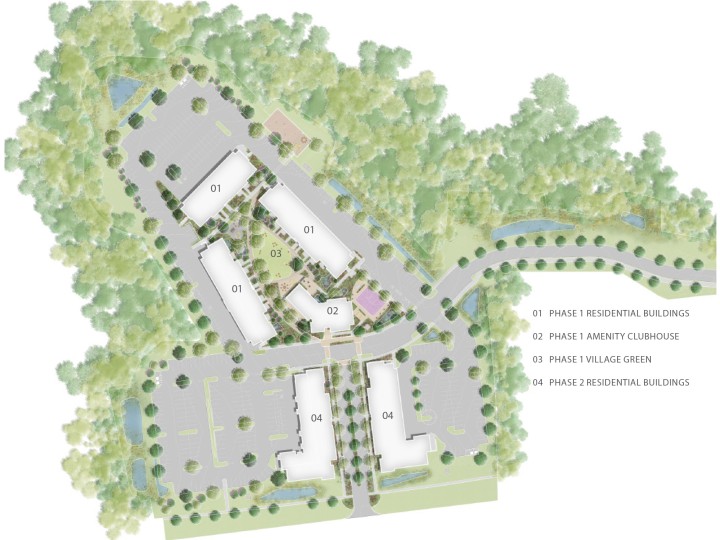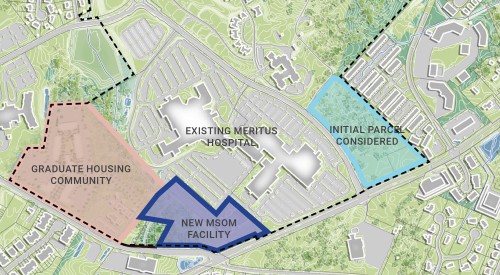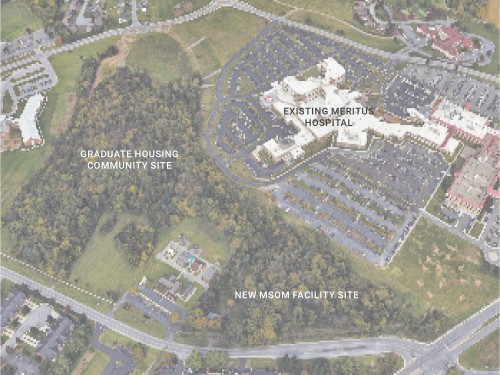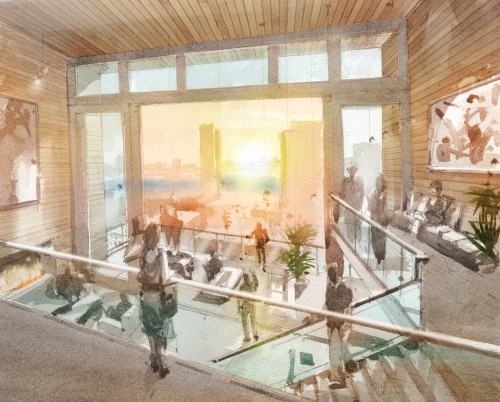
Meritus Health, Western Maryland’s largest healthcare provider, is in the process of creating the Meritus School of Osteopathic Medicine (MSOM) to advance its mission to improve health and to address a significant physician shortage in western Maryland, southern Pennsylvania, and the eastern panhandle of West Virginia.
Osteopathic Medicine is a relatively new and holistic approach to healthcare that focuses on treating the patient as a whole - as opposed to the traditional method of treating symptoms. This approach aims to educate patients on healthy attitudes and lifestyles that help prevent illness.
With this innovative approach to healthcare comes an opportunity to create a truly mixed-use, health-based community. Meritus Health is located in Hagerstown, a rural town in western Maryland. Hospitals in these locations have an exceedingly difficult time recruiting and retaining doctors from more urban areas. Therefore Meritus Health has decided to build the school of medicine directly adjacent to the hospital in order to attract and retain these doctors. Scheduled to open in 2025, the school will need to provide housing for more than 600 students. By incorporating this and future communities into the equation, the vision of what a health-based campus could look like begins to emerge. One that can redefine what it means to design for density in rural areas. One that creates a walkable healthcare campus that promotes wellness and offers convenience to attract and retain the best and brightest for Meritus.
The proposed community fully embraces Meritus’ dedication to an extensive master planning process which ensures land is developed wisely to embrace the best qualities of a village, rather than the worst of an isolated institution.
A process that creates an urban center which stitches together new and existing facilities as one continuous environment to live, work, play, and learn.
The Transition from Rural to Urban
In the past decades, we are experiencing a paradigm shift in favor of urban environments, as opposed to suburban or rural environments that continues to grow. More and more people prefer to live, work, and play in the same environment.
A total of 80% of the US population living in urban areas in 2020. Hagerstown is a rural area made mostly of suburban sprawl with a modest, low rise retail center. The adjacent surroundings of the medical center are predominantly single-family homes except for a few single-story commercial uses. Juxtapose this context to a national shift towards urbanism and what do you get? A significant physician shortage in the area.
But how do you create an urban environment with a sense of place in the middle of suburban sprawl?
First, we assembled a fully integrated team of all the key stakeholders. In this case the team was composed of the hospital leadership, Radnor Property Group, a development team with considerable experience building communities for graduate students and work-force housing, and Design Collective. We served as master planner, architect, interior designer, and landscape architect for the project.
Two sites were considered for the housing, one across the street to the north of the hospital and one close but separated by woods and a ravine to the south. Both sites received comprehensive density studies and zoning analysis, as well as considerations for walking distance and safety issues. The decision was made to go with the wooded site despite its significant topography. It could connect more seamlessly to the healthcare campus and would not require the students to cross a busy road to get to class.
The site for the residential community was accompanied by a Forest Conservation Easement.
Et qui duis ut amet nisi ad reprehenderit irure pariatur esse culpa. Esse incididunt dolor nostrud reprehenderit tempor incididunt pariatur ipsum nisi elit culpa incididunt aute. Id mollit Lorem exercitation ipsum esse elit id ullamco non voluptate ipsum sint reprehenderit magna. Sint ullamco minim id laborum officia ex pariatur culpa culpa sit esse nostrud. Cillum cupidatat reprehenderit eiusmod irure duis nisi voluptate eiusmod laborum elit adipisicing aliquip proident velit.
To preserve as much of the natural conditions as possible, early and careful consideration was given to working with the topography, mature tree locations, and efficient water drainage patterns.
The design team was able to push and pull the easement boundaries to help create a site plan that not only met the entire program and parking requirements, but created a sense of place for the residents as they overlook the natural wooded setting.
The final layout for the community is made up of six buildings in total. The community is anchored by a village green that organizes the first phase - three 4-story buildings approximately one hundred units each. Two other buildings scheduled to start construction a year later will frame a tree lined boulevard from the entry road and lead directly on axis to a new free-standing and centrally-located community building. To minimize the visual impact, parking is pushed to the periphery of the site or tucked under the buildings in off-hill conditions. This allows for welcoming green space connections between the buildings.
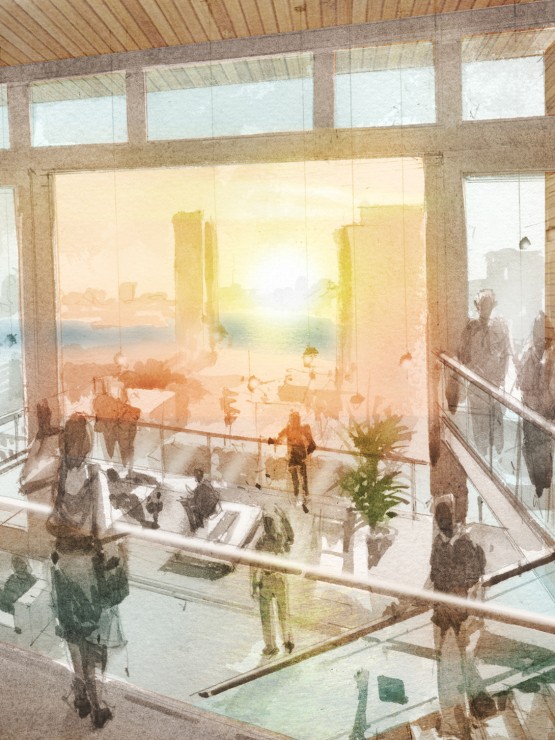

Nisi ad in consectetur amet nostrud magna commodo Lorem eu dolore proident elit. Deserunt voluptate excepteur veniam laboris adipisicing incididunt minim adipisicing id exercitation magna ut tempor. Mollit ex voluptate exercitation est sunt excepteur officia minim occaecat non. Culpa dolor occaecat dolore ex sunt qui incididunt culpa aute incididunt velit do aliqua eiusmod. Nostrud consequat nulla sunt. Aute proident consequat ad est anim ad aute.
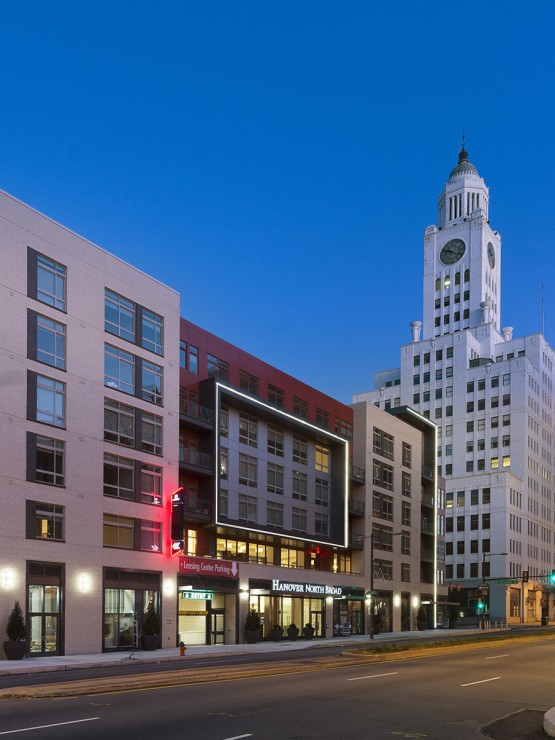

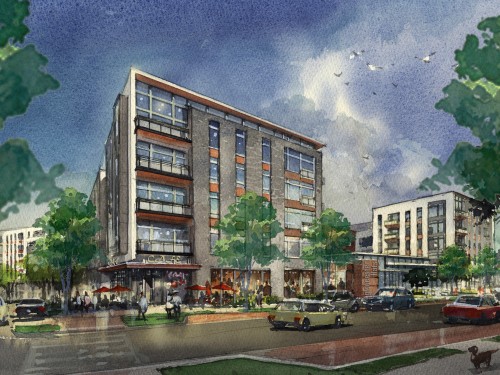
Tempor nisi consequat commodo in. Reprehenderit laborum occaecat cupidatat pariatur proident quis irure laborum sunt sit tempor irure adipisicing occaecat sunt. Laborum ex sint anim mollit enim duis. Amet ipsum officia pariatur esse non tempor. Aute ex nostrud deserunt adipisicing anim labore nostrud duis culpa anim excepteur elit.
Views and access to these spaces are captured by two large glass pavilions that house the common areas and amenities of the community building. One engages the village green while the other is on axis with the entry promenade to create a very deliberate urban feel in this otherwise rural location. Finally, a new road and walkway will link this community directly to the healthcare campus for easy access and to promote walkability. This also encourages residents to take advantage of all the amenities such as the library, cafe, and food options in the school of medicine facility as well as easy access to healthcare visits which now may seem less like a burden when only a few steps away.

Right-Sizing for Graduate Affordability
Meritus relied on Radnor to strike a balance between affordability and marketability while ensuring the student’s needs are satisfied.

FLOOR PLAN DIAGRAM DEPICTING UNIT MIX AND HOW VARYING THE UNIT DEPTH AIDED IN BREAKING DOWN THE SCALE AND MASSING OF THE RESIDENTIAL BUILDINGS.
In developing the right unit mix and massing approach to the project, Radnor worked with Meritus to explore how best to suit its graduate population’s needs. Meritus admits they are not in the housing business, but reserved the idea that graduate students want to live by themselves. The profession requires a large amount of studying which lends the students to prefer dedicated personal space. So initially Meritus asked for all Studio and 1-Bedroom units. Radnor responded with a unit mix that included 17% 2-Bedroom units to allow for more affordability for a wider range of students. This is still far below typical market rate mixes that would offer closer to 40% 2-Bedrooms. A slightly smaller junior 1-Bedroom unit was also added to the mix to keep the overall building footprints smaller and help with affordability of the project.
The importance of affordability to the graduation population also meant being strategic in the allocation of the budgeted dollars to the development of a thoughtful architectural approach.
With single-family homes in the immediate context, it became extremely important for the design team to consider the scale of the residential buildings. Initially, the design team had envisioned the buildings to be 3-stories with several smaller buildings scattered throughout the site. But after working closely with the civil engineer to understand the topography better, it became clear that fewer, 4-story buildings posed the best solution.
Breaking down the scale of the 4-story residential buildings was accomplished by using a kit of parts that also serve to unify the architecture of the various buildings. The footprints alternate between shallow and deep units to create variation in the facade. The nicest materials were reserved for the facades facing the village green since they were most visible. More modest materials were placed on the facades facing parking areas and woods.
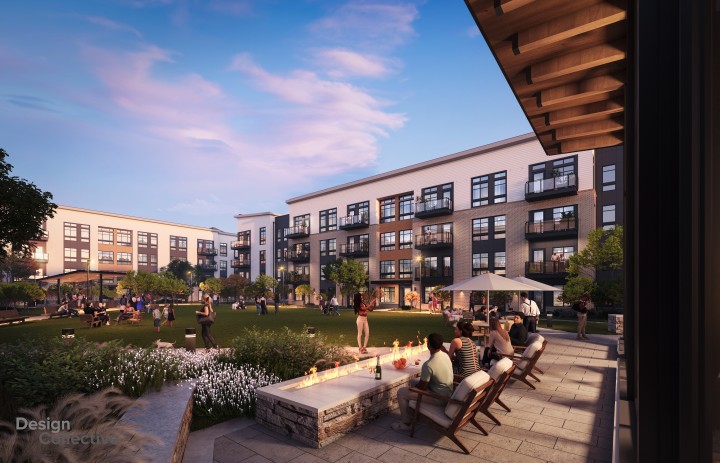
Since the community building was free-standing, it could have a more expressive roof line. It was given an iconic butterfly roof line and constructed of heavy timber to define the most public elements. Large floor-to-ceiling glass connect the interiors to the scenic outdoors with amenities that include athletic courts, landscaped walkways, and covered study and dining area.
The Future
Together, these design decisions will allow Meritus Health to realize a unique healthcare campus. A campus that is walkable, beautiful, sustainable, and most importantly affordable for graduate students.
The students that will one day become the doctors and nurses so desperately needed in rural areas like Hagerstown.
In fact, Meritus Health is now exploring the possibility of adding additional housing units to the project as well as expanding the extent of the master planning analysis to include several new properties adjacent to the core campus. Smart growth, timely planning, and designing for wellness have positioned the institution to succeed in its mission to create the healthcare campus of the future. And so, it is possible to have your cake and eat it too... or in this case, maybe it’s an apple?
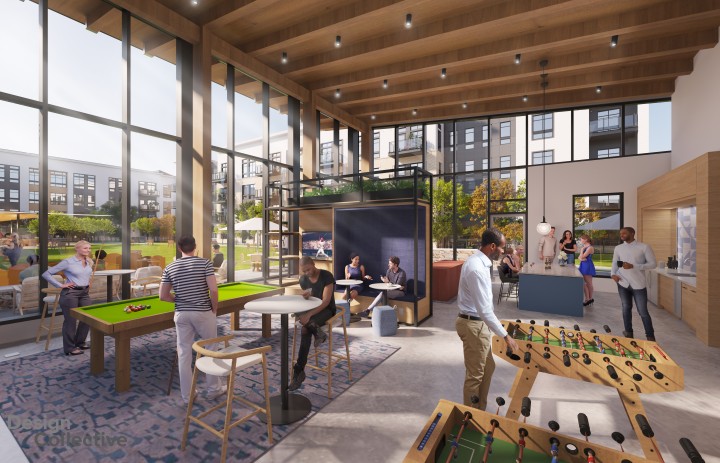
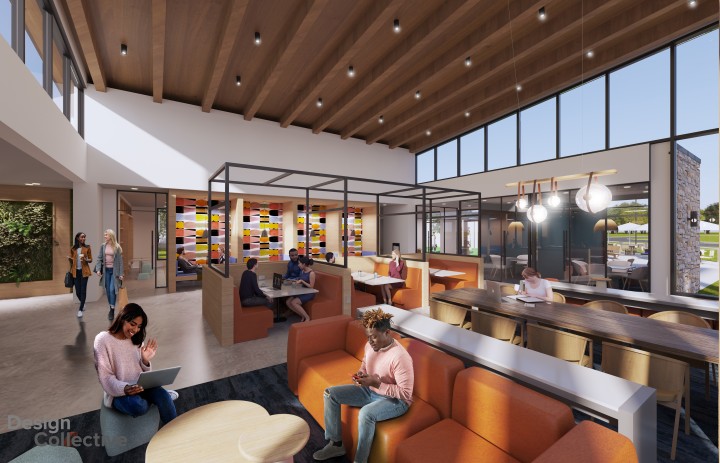
INTERIOR VIEWS OF FREESTANDING CLUBHOUSE BUILDING.

